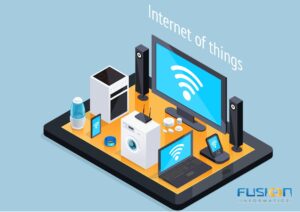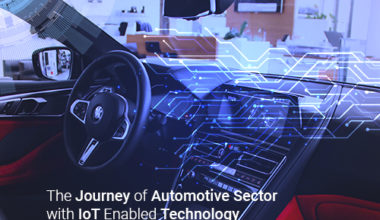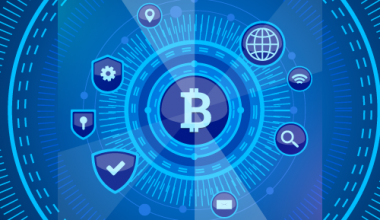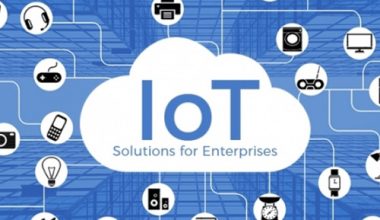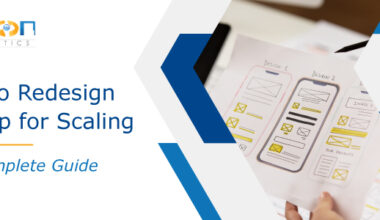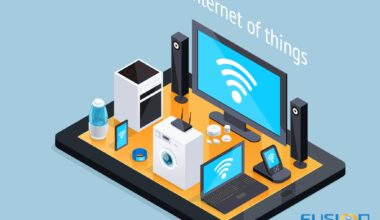
In a new era of digital transformation, the Internet of Things (IoT) is transforming how companies do business. It is obvious that a tremendous confidence has built upon IoT. Taking into consideration, it can help companies utilize that fully. Nonetheless, the importance of IoT implementation in traditional IT systems has underestimated by most organizations.
According to the facts until now, the Internet of Things has already shone out the world. Through 2020, it will anticipate that we will increase the number of related things to 20.7 billion in the future and that the IoT market is valued at over $7.2 trillion.
With the implementations made in several organizations showing dozens of different IoT use cases, the Iot Development Company has already shown its adaptability. Companies worldwide are therefore now working to develop integration strategies that fit IoT solutions with these tools.
What is So Difficult about IoT Integration?
New technologies also pose unique challenges to integration. Yet IoT has nothing to do with the sophistication and scope of implementation that organizations usually struggle with. Here are some factors that distinguish IoT.
Colossal number of connected devices:
The sheer number of endpoints makes integration difficult by hundreds or even thousands of connected devices that allow simultaneous exchange the data.
Stream messaging:
It is important for IoT to capture and process a data stream from hundreds of intelligent sensors but it has become difficult as of now. Traditional integrations are based on batched data, which causes businesses to reconsider their approaches to integration
Dynamic endpoint counts:
Enable IoT to grow easily. Nevertheless, traditional integration systems allow a certain number of endpoints.
New communication protocols:
Numerous IoT smart sensors use very new communication protocols, so organizations need integration systems that can be easily modified to new IoT protocols.
Low latency tolerance:
Due to the nature of IoT deployments, the integration systems need to support super-fast data processing and retransmission.
Let Us Understand the Need to Incorporate Data into IoT
IoT finally looks instrumental in integrating the various departments and procedures in the monarchy with associated gadgets to promote better communication between business elements in order to enhance their usability. With its key features, the IoT application system has been the capacity to provide authority and control over critical business-related procedures.
In addition, data from different sources are compiled according to industry prerequisites to use the information for incorporation. Innovative proponents concentrate on information in order to emphasize real IoT predictions.
In this case, IoT systems take on an easy task to modernize the attributes of huge data, including speed, volume and distance. IoT-integration firms use incessant sensors that collect massive intelligence measures endlessly, exponentially more remarkable information.
Benefits and Obstacles of Implementing IoT into Your Business
IoT Problems and Solutions with Use Cases
IoT devices are among the most common in use: smart watches, smart lights in homes, smart televisions, electric meters, security systems, and commercial environments, voice employees, etc. Many businesses, however, begin their IoT journeys without recognizing potential implementation challenges. For starters, it sometimes takes an overwhelming amount of data generated by IoT devices.
Communication Needs of IoT Project
The implementation of IoT presents huge security challenges, which can even give the most prepared CSO a cerebral discomfort. The total number of endpoints, the massive amount of data streaming in the biological system and the central concept in the most important procedure of every device.
You should carefully plan an enormous number of things in order to communicate with each other to the degree to which the center procedures of your company are strengthened. When choosing a communication method for the related devices, interesting points are:
- The number of devices involved being connected.
- Connected device types
- A range of technologies available for communications
- The latency resistance
- Considerations concerning the autonomy, aggregation and localized computing of devices
Remote Health and Monitoring
Now patients are no need to wait for an emergency room and along with that, patients are no need to wait for emergency area as well along with in total expenses, IoT assists in remote health maintenance. Remote monitoring, also known as Telehealth and is considered as one of the most popular and recognized technologies in healthcare and IoT.
Some of the benefits of IoT integration in Health and Medical Monitoring:
- It helps reduce costs.
- Helps to remove the need for such visits
- This helps to improve the quality of life of patients by reducing travel issues.
- If a person is not able to access to mobile and reliant on public transport, so this makes this it very simple with a big difference.
Tracking of Assets
While 85% of global industrialized individuals are aware of asset-efficiency activities, only 15% of those surveyed regularly implemented these initiatives, based on recent research. The Asset Tracking System is designed to allow a business to easily locate and monitor key assets via IoT.
This allocates to optimize the Supply Chain Management operations, inventory management, elimination of quality problems and prevention of fraud, including the supply chain.
IoT incorporation in asset tracking provides many advantages:
- The location is tracked by sensors
- They supply individual containers with a temperature status
- At a certain temperature, perishable goods remain fresh
- It supply refrigerated containers with real-time status
- The current status and temperature can be provided
In that, every organization has been trying to help its customers profit from IoT technologies. Finally, both try to solve an issue from the point of view of IoT and artificial intelligence experts to help businesses make a difference and build quality.
Also Read – How Artificial Intelligence Revolutionizing Logistics, and Supply Chain
Predictive Maintenance
This is one of the most common cases of IoT integration. The organization should retain and control the assets as an opportunity for millions of dollars to boost capital expenses.
The industry management team can conclude by using sensors, cameras, and data analysis when a device fails. The main thing is at the right time to get the right information.
Some of the advantages of IoT implementation for maintenance:
- Systems activated by IoT could sense signs of alarm
- Data is used to build maintenance schedules
- Prevent issues from fixing service equipment
- IT enables managers to know what maintenance product is needed
- Maintenance work is scheduled as the system stays running during operation.
- IoT control by increasing the lifespan and safety of equipment
- This offers cost savings by preventive maintenance on a time basis
- IoT control through improved lifespan and protection of the devices
- This offers a time-based protective maintenance cost savings
Philips e-Alert
The goal is to solve the MRI device problem with a new IoT-driven solution from Philips, called the e-Alert. It blends remote sensor technology with the global scope and reliability of mobile messages to from open market to sense and respond quickly to potential problems with MRI.
Rather than wait for a device to fail, Philips ‘ new system proactively approaches medical equipment remotely and warns hospital workers if a problem arises.
Some of the advantages of MRI system IoT integration:
- If something is wrong, it sends an automated warning.
- This leads to achieving its wider goals of improving performance.
- Improve the quality of care taken for the patients.
- Consider any expenditure positive by increasing healthcare costs for patients.
- IoT Integration solutions provide practical insights that allow retailers to develop new business models and increase their ROI.
Some of the common challenges are security, inventory management, infrastructure and data management, and IoT has helped solve them:
- Improved Supply Chain Management
- Smarter inventory management
- Automate inventory visibility
- Better Customer Experience Automated checkout
- Automated checkout
IoT has been able to provide authority and transparency over significant business-intensive procedures as its primary satisfying elements. Within the field of related hardware, IoT finally appears to be instrumental in integrating various specialty units and systems, which leads to better communication between business elements to enhance their functions.
Innovation experts depend on information in order to highlight the true IoT calculation. In addition, data from different sources are obtained according to the industry requirements in order to use the details for incorporation.
In this, IoT systems can easily upgrade the attributes of huge data, which includes speed, volume and distance. IoT systems comprise unceasing sensors that constantly collect large data sizes, exponentially more remarkable than data collected for huge data analysis.
Cloud-based solutions for Process and Integration of Data
IoT App Development Companies are first concerned about processes and software combinations in order to achieve scalable success with IoT integration. IoT phases must accommodate information and business types in your organization. Most studies agree that they can cover their innate ability to initiate their critical IoT phases.
In addition, IoT collaboration needs slowly evolve as you plan to extend your company through IoT. A cloud-based stage as a support creation helps enormously to address these problems.
IPaaS provides organizations exposure and allows them to incorporate various working processes and IoT businesses.
- Organizing of Multiple IoT implementation with shared common components
- Implementation of multilevel workflows
- Advanced application functions, including general-purpose translations are introduced
- on-premises software applications are leveraged which are required
In order to achieve successful implementation, the IoT integration issues are where we will concentrate. Nonetheless, you should and must have several IoT components supplied if your company has most of its IT components hosting on site.
Conclusion
The IoT deployment explores the complexities of integration and upgrades with the latest data science technologies. In addition, with our machine learning and artificial intelligence experience, we help you rapidly turn the IoT data into functional business insights.
Fusion Informatics is a well-known IOT application development company and mobile app development company that provides Custom Software Development Services and Solutions for mobile app development and design. We also created over 1500 applications and helped many entrepreneurs to boost their business and increasing their business potential. You can email us to [email protected] for questions / doubts.
